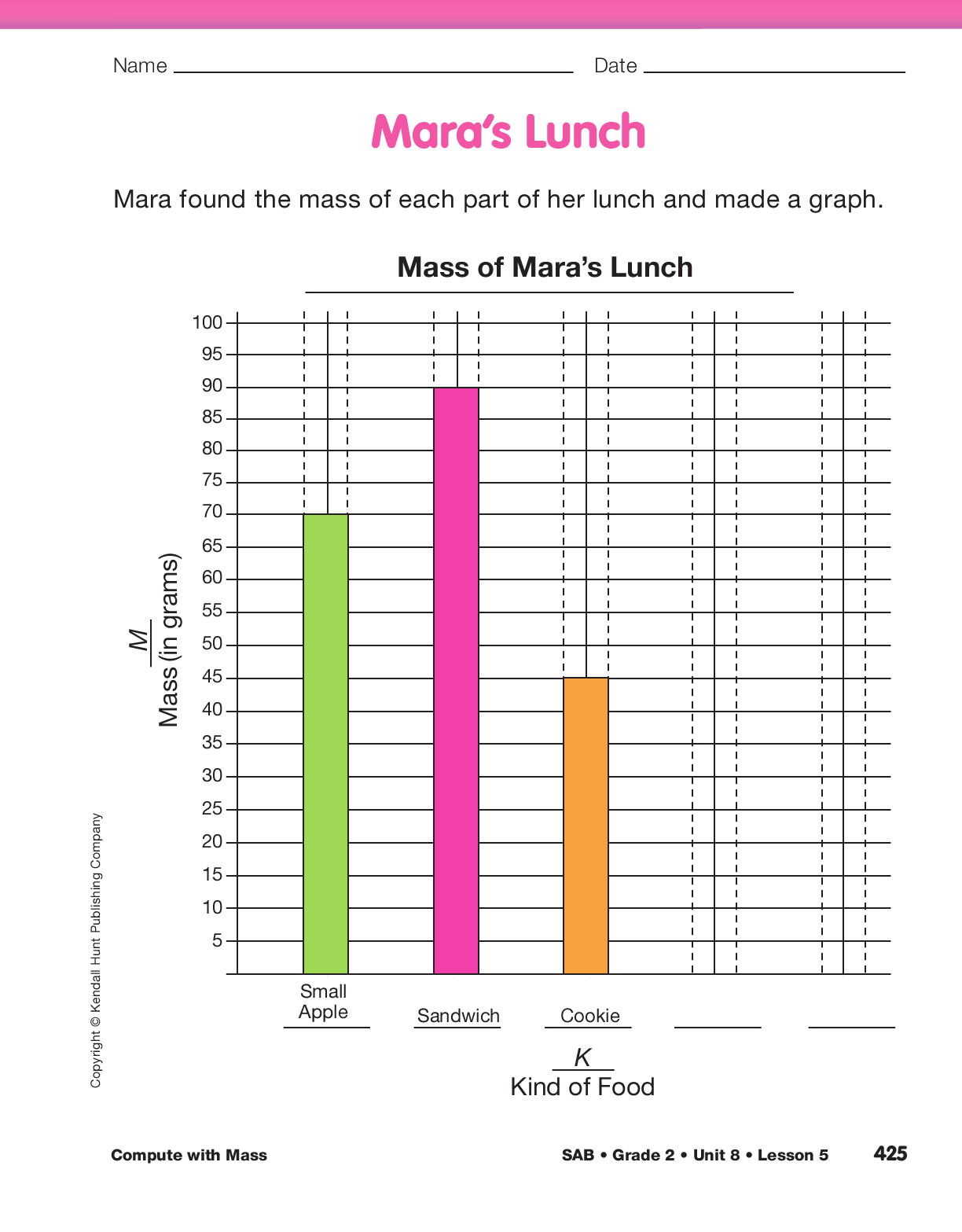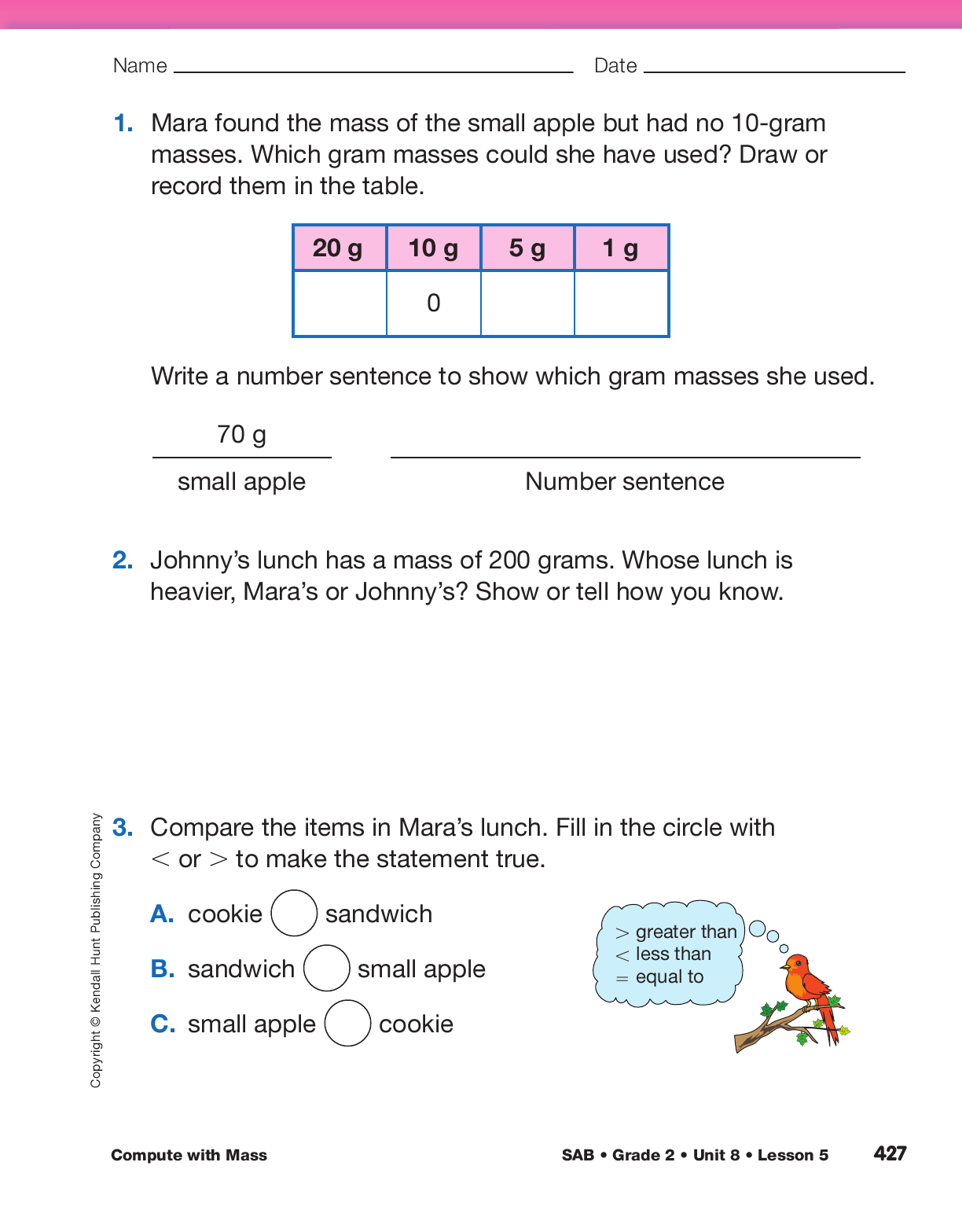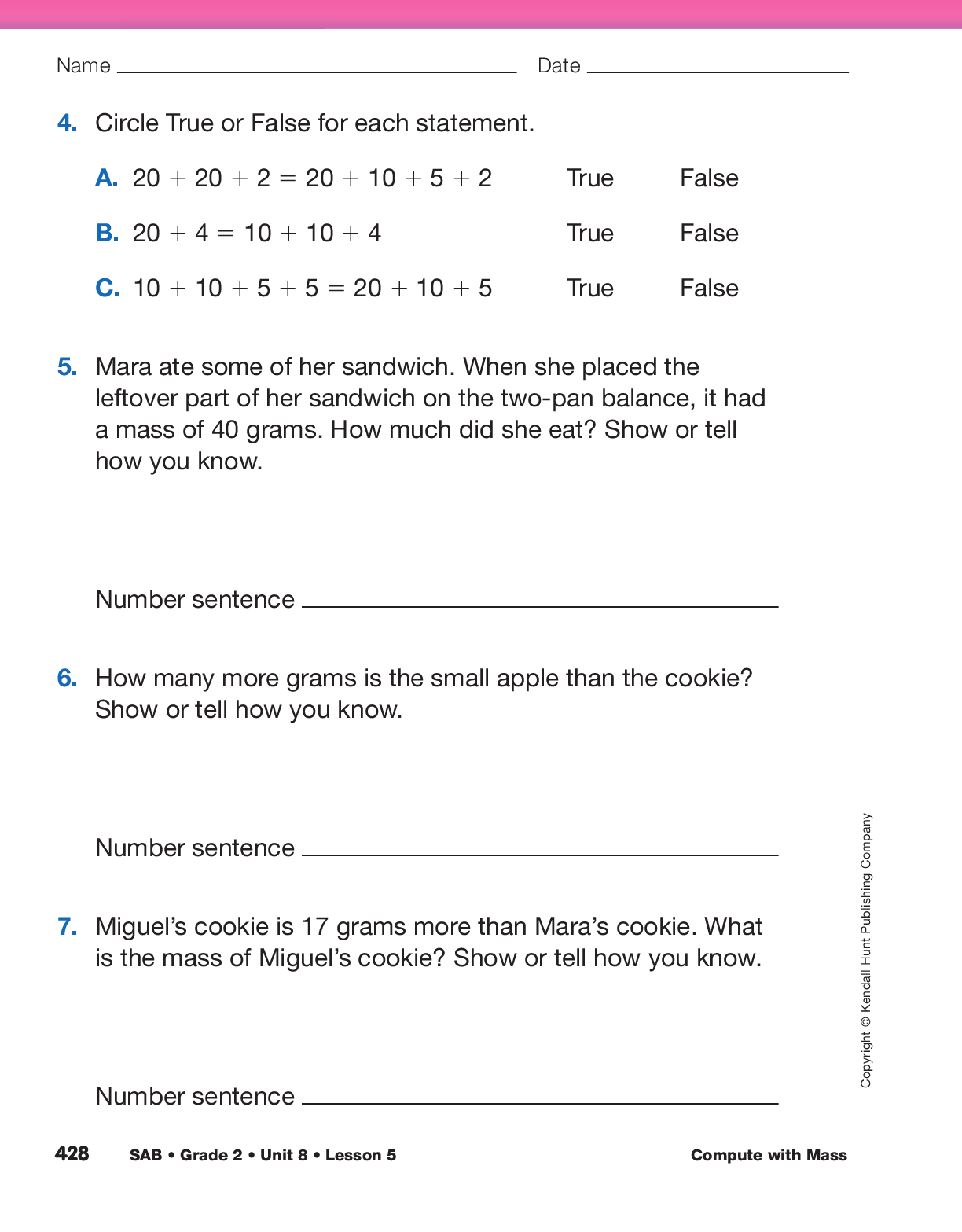After students play the Make 99 Game, ask them
what strategies they used to be the first player to
make a sum of 99 or over.
- When you were close to 99, did you change your
strategy for placing the next card on the Add Pile?
(Possible response: Yes, I had to be careful not to
let my partner reach 99 first, so I added the numbers
in my head before I put a card down. I knew
that the highest card my partner could put down
was 9, so when it was my turn, I didn’t want to
make the sum 90 or more.)
- Imagine it is your turn and the sum is 89. You hold
the cards 0, 1, 5, 6, and 9. Which card would you
play? How could you win? (Possible response: I
would play 0, because then the sum will still be
89. On my partner’s turn, if he played 1, I would
play 9 and I would win.)
- Once you reach a sum of 90, does your strategy
for winning change? (Possible response: I would
play lower numbers to make it harder for my
partner to reach 99. If I played high numbers, he
or she could play almost any number to reach 99.)
After discussing strategies, have students play the
Make 99 Game again or place it in a center for targeted
practice.
Assign the Mara’s Lunch pages in the Student
Activity Book to assess students’ understanding of
the concepts in this lesson. Remind students to show
their work [MPE5] and use labels [MPE6].

Assign Mara’s Lunch pages and the Feedback Box in the
Student Activity Book to assess students’ abilities to
compose and decompose numbers using ones, fives, tens,
and hundreds [E1]; use words and symbols (e.g., <, >, =) to
show comparisons of quantities [E2]; recognize that different
partitions of a number have the same total
(e.g., 50 + 4 = 40 + 14) [E4]; apply the properties of addition (e.g.,
commutative, associative) to write number sentences that
represent mass [E5]; solve addition and subtraction
problems (e.g., part-whole, take away, join, compare)
involving mass [E6]; show or tell how to solve a problem
[MPE5]; and use labels to show what numbers mean
[MPE6].
Place the Make 99 Game pages from the Student Activity
Book along with a deck of 4 sets of digit cards 0–9 in a
center for targeted practice of using addition strategies to
add two-digit and one-digit numbers.
















